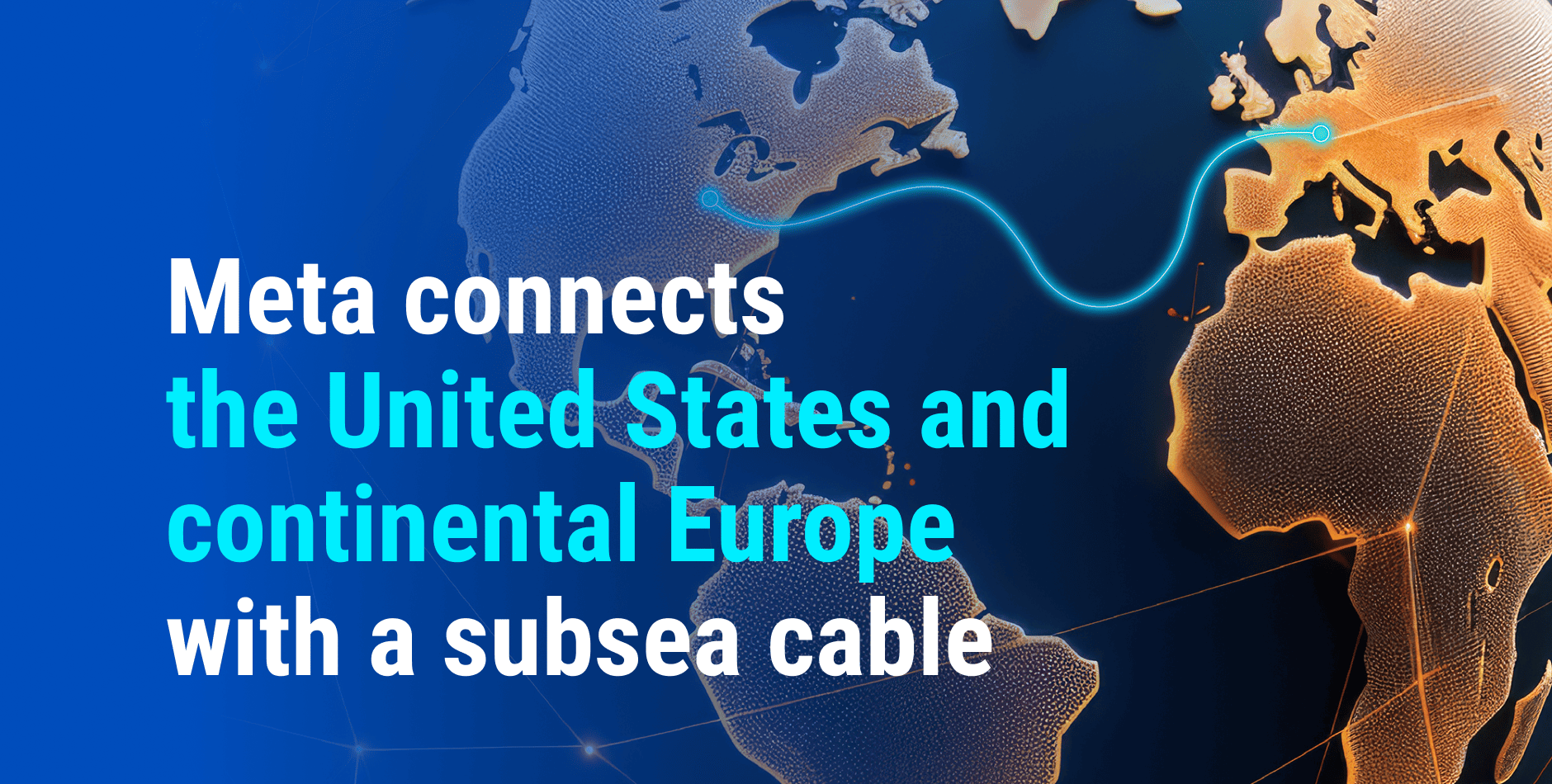Hyperscalers Fuel Submarine Cable Boom

The submarine cable industry is experiencing unprecedented growth, with investments projected to reach $9.80 billion by 2029, up from $7.96 billion in 2023. This expansion is being driven primarily by hyperscalers like AWS, Google, and notably Meta, which has announced plans to build the world’s first 1 Petabit per second (Pbps) transatlantic submarine cable.
For our clients, this submarine cable expansion strengthens IPTP Networks’ already extensive global infrastructure. The addition of these new high-capacity routes complements our existing connections to established systems like FLAG Atlantic-1 and next-generation cables like Dunant. By integrating these submarine pathways into our MPLS backbone with 235 points of presence worldwide, we can offer even more robust connectivity options with improved performance and redundancy across key global routes – delivering both the low-latency consistency financial firms require and the geographical diversity that enterprise customers increasingly depend on.
Record-Breaking Capacity Meets Geopolitical Concerns
Meta’s ambitious project aims to connect the United States and continental Europe with a cable featuring up to 48 fiber pairs using Space Division Multiplexing (SDM). The system will likely utilize both C and L optical bands simultaneously, a technique previously deployed in Pacific routes by SubCom in the PLCN cable system.
To achieve this remarkable capacity, Meta faces significant technical challenges. The company may need to establish intermediate power stations on Atlantic islands such as Bermuda or the Azores, following the approach used by Nuvem for its high-capacity systems. Alternatively, Meta could deploy dual-core optical fibers, currently only available from NEC, which has implemented this technology in branches of the Taiwan-Philippines-US (TPU) cable.
This massive investment comes amid growing concerns about submarine cable vulnerability. Recent incidents in the Baltic Sea, Red Sea, and near Taiwan have highlighted how easily these critical infrastructure elements can be damaged, whether accidentally or deliberately. With 95% of intercontinental traffic and approximately $10 trillion in daily financial transactions flowing through these cables, the stakes could not be higher.
What This Means for Telecom Providers and IT Industry
For telecom operators and IT departments, these developments create profound changes to the connectivity landscape:
Wholesale price transformation. The influx of capacity will likely drive down wholesale bandwidth costs, allowing providers to offer more competitive packages to end users. Smaller regional providers will gain access to previously unimaginable amounts of international bandwidth, potentially democratizing high-capacity services.
Redundancy becomes mandatory. With submarine cables now recognized as strategic assets, single-route dependencies are becoming unacceptable business risks. Companies like Airtel are already implementing strategies that include at least three cables for each major route and hybrid networks combining submarine and terrestrial cables with cloud infrastructure. This multi-path approach will become the new minimum standard for business continuity planning.
AI creates a feedback loop. Artificial intelligence is simultaneously driving demand for more bandwidth while providing new tools for network management. The energy-intensive training of AI models is stimulating the creation of new markets in the Middle East and Asia, requiring additional routes with lower latency to connect new AI data centers. Meanwhile, AI-powered monitoring systems using distributed acoustic sensing can detect potential cable damages in real-time, potentially reducing repair times and improving overall reliability.
Security paradigms are shifting. With the advancement of quantum computing, traditional encryption methods protecting data transmitted through submarine cables may become vulnerable. Industry experts warn that sufficiently powerful quantum computers could dramatically increase security threats. While “quantum-resistant” protection technologies are being developed, their effectiveness remains limited. Telecom providers must now incorporate quantum readiness into their long-term security planning.
Infrastructure limitations create bottlenecks. Despite the billions being invested, physical constraints may limit how quickly the submarine cable boom can progress. Experts note that there are only 22 specialized ships worldwide capable of repairing and laying submarine cables, with just two operating under the US flag. This shortage of specialized vessels could impact deployment timelines and emergency response capabilities.
Industry-Wide Transformation
The involvement of hyperscalers is fundamentally changing how submarine cables are financed and operated. Rather than telecommunications companies leading projects, tech giants are co-investing to support their cloud services, AI applications, and content delivery networks.
This shift creates new dynamics for traditional telecom companies. While they gain access to capacity without bearing the full financial burden of cable deployment, they must adjust to a market increasingly driven by the needs of large technology companies. The expertise of telecom operators in managing regulatory compliance and securing landing rights remains valuable, creating opportunities for strategic partnerships.
Integration of energy and data infrastructure. An emerging trend is the development of hybrid cables capable of transmitting both data and electrical power. Such systems are being considered for deployment between locations like the Isle of Man and Great Britain, potentially creating new synergies between telecom providers and energy companies.
Digital divide challenges persist. Despite the investment boom, not all regions are benefiting equally. Developing markets often lack sufficient submarine infrastructure to meet growing digital needs. Strategic choke points like the Malacca Strait and the Red Sea require expanded access to support increasing traffic between rapidly growing markets. For telecom providers serving these regions, securing capacity on new systems represents both a critical challenge and significant opportunity.
As Meta pushes the boundaries with its petabit transatlantic cable, the entire industry is being forced to evolve, navigating the competing demands of increased capacity, enhanced security, and cost efficiency in an increasingly unpredictable global environment. The company’s around-the-world cable ambitions, announced late last year, suggest that this transatlantic project is just the beginning of a new era in global connectivity infrastructure.
